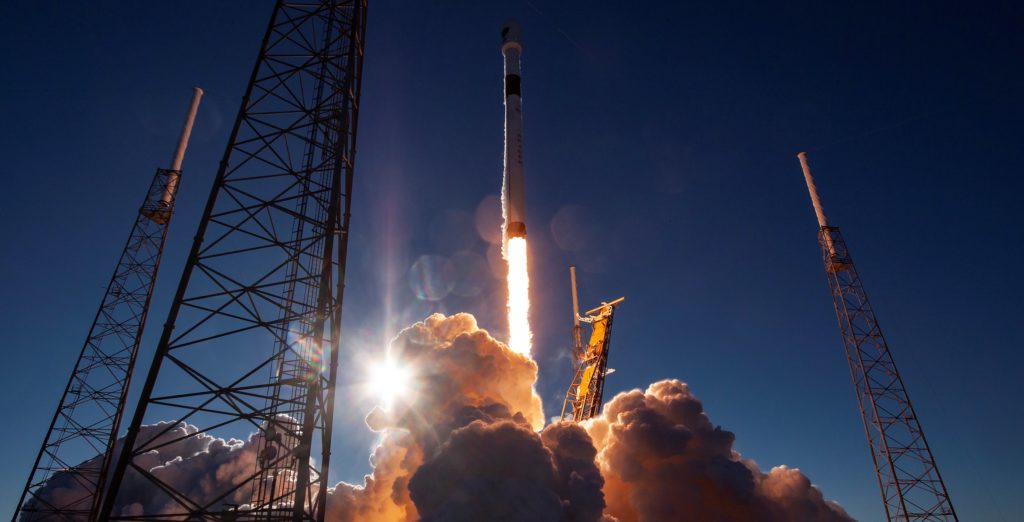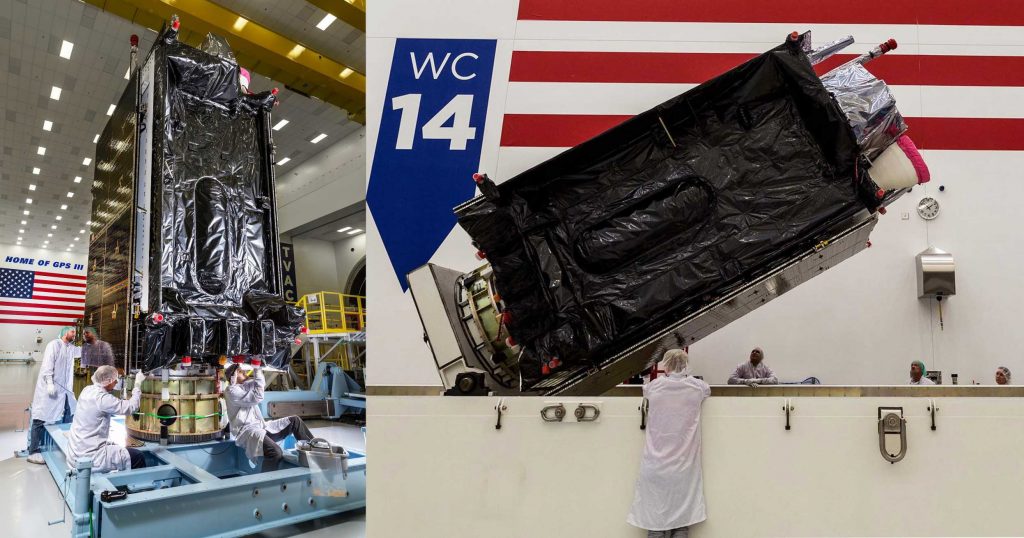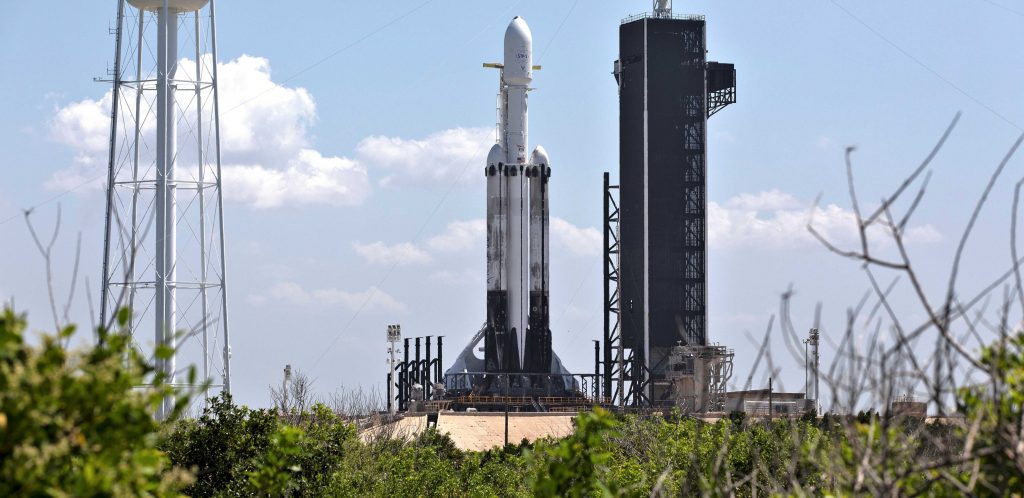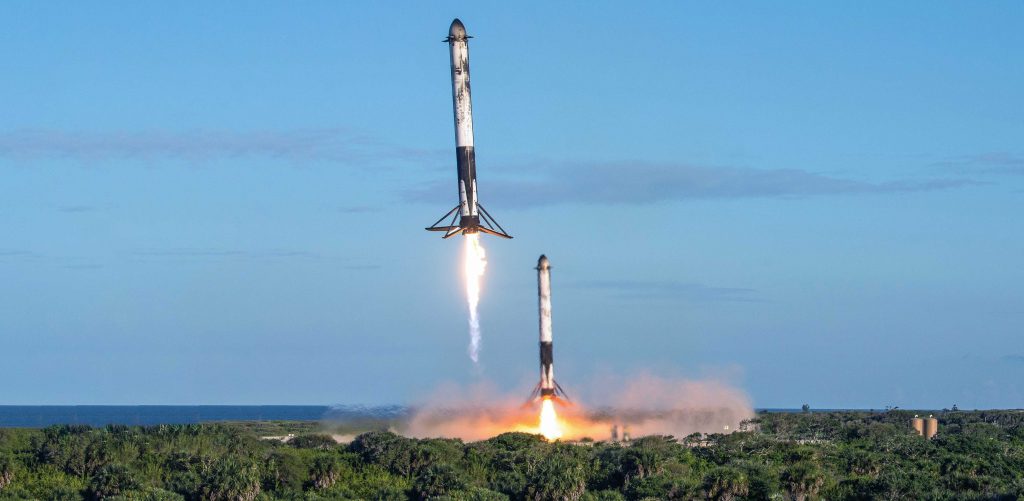SpaceX officially has permission to perform a Falcon 9 booster recovery after its next launch for the US Air Force, now guaranteed to be the first time a rocket booster attempts to land during an operational launch for the US military.
Alongside their booster landing attempt confirmation, the USAF Space and Missile Systems Center (SMC) also posted the first official SpaceX video of a rocket acceptance test released in almost 2.5 years, a test it says was completed just days after the GPS satellite it’s scheduled to launch arrived in Florida. The very same Falcon 9 booster was shown off in unprecedented detail just last month and now SMC says that SpaceX fired up the rocket at its McGregor, Texas development facilities for a routine static fire on February 13th. The company is currently scheduled to launch its second USAF GPS III satellite – Space Vehicle 03 (SV03) – no earlier than 7am EDT (11:00 UTC), April 29th, a target set just days ago.
With the spacecraft in Florida and factory-fresh Falcon 9 booster successfully proofed, all that remains is for SpaceX to test and deliver the mission’s Falcon upper stage and payload fairing (if it hasn’t already). After the booster – believed to be B1060 – is inspected and its tanks are cleaned, it can also be packaged and transported by road the rest of the way to SpaceX’s Florida launch facilities, setting the company up for the critical mission and historic landing attempt.
While SpaceX has technically already landed Falcon 9 and Falcon Heavy boosters after its NROL-76 and STP-2 launches for the NRO and USAF, the company only officially began operational military launches once its Falcon 9 rocket was fully certified. STP-2, for example, was effectively high-stakes make-work designed to help the USAF fully certify SpaceX’s brand new Falcon Heavy rocket to launch expensive – verging on irreplaceable – military satellites.
Its first truly operational US military launch occurred in December 2018, when Falcon 9 booster B1054 was intentionally expended in support the USAF’s inaugural GPS III launch, successfully placing the first of 10 (or 32) planned upgraded navigation satellites into orbit. It’s believed that the USAF required such extreme safety margins (extra propellant and performance) that SpaceX couldn’t even attempt booster or fairing recovery. This made B1054 the first (and hopefully only) Falcon 9 Block 5 booster to launch without even the basic hardpoints needed to attach landing legs.

Effectively confirming that B1054’s demise was was a contrivance and by no means a technical necessity, the SMC announced on February 20th that SpaceX’s GPS III SV03 mission is officially “the first time a booster is planned to land on a drone ship during a NSS [National Security Space] launch.” Effectively identical to B1054 aside from the addition of grid fins and landing legs, this means that Falcon 9 booster B1060 will be able to attempt a landing aboard a SpaceX drone ship shortly after launch.

Just like GPS III SV01 satellite launched by SpaceX in December 2018 and the GPS III SV02 satellite launched United Launch Alliance (ULA) launched in August 2019, GPS III SV03 is a more than $500 million spacecraft designed to upgrade the US GPS navigation constellation. SpaceX has already won five (of five) competitively-awarded GPS III launch contracts thanks to its Falcon 9 rocket’s exceptionally competitive pricing, meaning that there is an excellent chance the company will win many more in the near future.
GPS III SV03 is one of 10 “Block IIIA” satellites to be launched between 2018 and 2026 and will be followed by another 22 “Block IIIF” satellites to be built by Lockheed Martin for ~$330M apiece. All 26 unassigned spacecraft will need launches of their own between now and the mid-2030s, worth anywhere from $1-2.5B to SpaceX if the company performs well on all five of its first contracts and continues to crush competitor ULA on launch costs.


With the USAF already demonstrably interested in supporting Falcon booster reusability and now open to SpaceX recovering Falcon 9 boosters after moderately-challenging GPS III launches, it’s safe to say that SpaceX’s ultra-competitive pricing is here to stay.
Check out Teslarati’s newsletters for prompt updates, on-the-ground perspectives, and unique glimpses of SpaceX’s rocket launch and recovery processes.

(adsbygoogle = window.adsbygoogle || []).push({});
<!–
–>
var disqus_shortname = «teslarati»;
var disqus_title = «SpaceX's next military launch cleared for historic rocket landing attempt»;
var disqus_url = «https://www.teslarati.com/spacex-next-military-launch-historic-rocket-landing/»;
var disqus_identifier = «teslarati-130889»;

